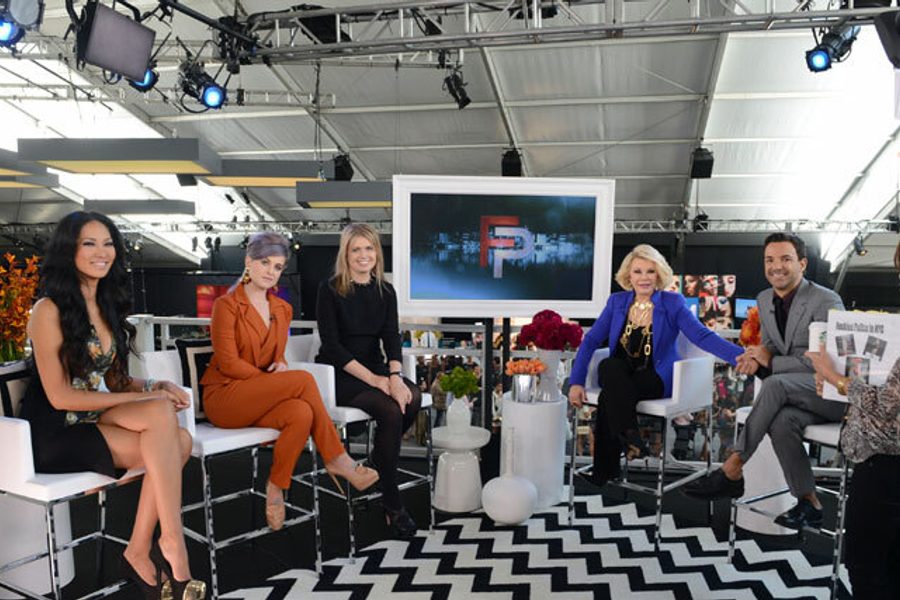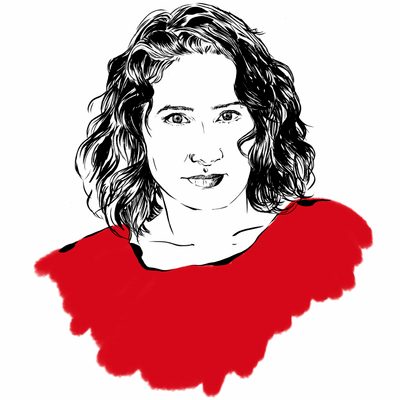
Joan Rivers spent years as a television writer, including a stint on The Tonight Show. But this week, the popular comedian is one of the targets of a strike by TV writers on the show Fashion Police, which Rivers co-hosts with Kelly Osbourne, Giuliana Rancic and George Kotsiopoulos. (Her daughter Melissa is executive producer.)
Writers on the E! Network show allege that their bosses ignore California wage-and-hour laws and have underpaid them by $1.5 million. Their strike, they say, will continue until Fashion Police signs a Writers Guild of America contract, providing them with union protection and industry-standard wages and benefits.
Television jobs might seem glamorous, but behind the scenes, writers work long hours, and the glamor factor is often used to press them to stay silent about less-than-stellar conditions on the job.
In the show, a spin-off of Rivers’ popular red-carpet stints, she and her co-hosts discuss celebrity fashion choices. While those critiques may seem unscripted, there’s a team of writers behind the scenes perfecting each snide remark and cutting takedown. Like many TV writers and producers, the Fashion Police writers say they work long hours, sometimes pulling 16-hour shifts. Yet, according to the complaint they filed with California’s Division of Labor Standards Enforcement, they don’t get overtime pay, and their extra hours often go entirely uncompensated.
Not only is Rivers a co-host, but the writers are employed by both E! and Rivers’ production company, Rugby Productions. In a statement, Writers Guild of America West President Chris Keyser said, “Throughout our history, prominent members of the guild have stood up for their fellow writers to ensure they are treated fairly and compensated properly…Unfortunately, this has not been the case with Ms. Rivers.”
The WGA is backing the strikers and has notified its members that, under its Working Rule 8, they are prohibited from writing for the show while the strike continues.
The rise of reality TV and other “nonfiction” television programs like Fashion Police has meant a shift in the working conditions for the writers and producers who make them happen. These shows appeal to executives because they’re relatively cheap to produce and often, like Fashion Police, non-union. Compared to relatively well-compensated positions on unionized scripted dramas, the writers and producers on cable programs often labor in what have been called “white-collar sweatshops.” Yet a gig on a high-rated show like Fashion Police is a step up the career ladder for struggling workers in the entertainment field.
Given this, if non-WGA writers are approached to replace the strikers, they may be sorely tempted, notes striker Eliza Skinner in a post on her blog. Skinner urges fellow comedians not to scab:
If you work the jobs when we’re on strike the company has no reason to fix the situation. If you are good enough to work the job now, you’ll be good enough in a month. By that time, the pay rate for the exact same job could be 6 times as much. If you don’t wait, it might never get there.
In a competitive industry it can be hard to convince workers to stand together, and in relatively high-end positions that can seem like unattainable dream jobs, it can be difficult to convince workers to make demands of their employers. Reporting for AlterNet in 2011, I spoke to a freelance nonfiction TV producer who called her job “a labor of love” and explained that such love of the job can convince writers and producers to put in extra hours — but those extra hours quickly become the norm.
In an economic climate in which all workers are told they should feel grateful just for employment, jobs in the entertainment industry can seem like a luxury, but these shows make lots of money for network executives. And, as WGAW’s Keyser and WGAE president Michael Winship point out in a statement, the “writers are an integral part of that success.”
This strike represents an escalation in tactics as the guild pushes to organize workers in this part of the sector, and the workers fight to improve their conditions. Their organizing victories hold lessons for those who would like to see other high-status, high-stress, high-turnover white-collar jobs (such as those in technology) organized. Though the entertainment industry in Los Angeles has an unusual degree of unionization, giving the WGA power that unions don’t have in other fields, the Fashion Police example still provides a model for young, ambitious, white-collar “creative” workers seeking to organize and take collective action.
As Eliza Skinner wrote, “We’re fighting not just for our jobs, but for future writers too. That is you, future writer.”
Sarah Jaffe is a writer and reporter living in New Orleans and on the road. She is the author of Work Won’t Love You Back: How Devotion To Our Jobs Keeps Us Exploited, Exhausted, and Alone; Necessary Trouble: Americans in Revolt, and her latest book is From the Ashes: Grief and Revolution in a World on Fire, all from Bold Type Books. Her journalism covers the politics of power, from the workplace to the streets, and her writing has been published in The Nation, The Washington Post, The Guardian, The New Republic, the New York Review of Books, and many other outlets. She is a columnist at The Progressive and In These Times. She also co-hosts the Belabored podcast, with Michelle Chen, covering today’s labor movement, and Heart Reacts, with Craig Gent, an advice podcast for the collapse of late capitalism. Sarah has been a waitress, a bicycle mechanic, and a social media consultant, cleaned up trash and scooped ice cream and explained Soviet communism to middle schoolers. Journalism pays better than some of these. You can follow her on Twitter @sarahljaffe.








